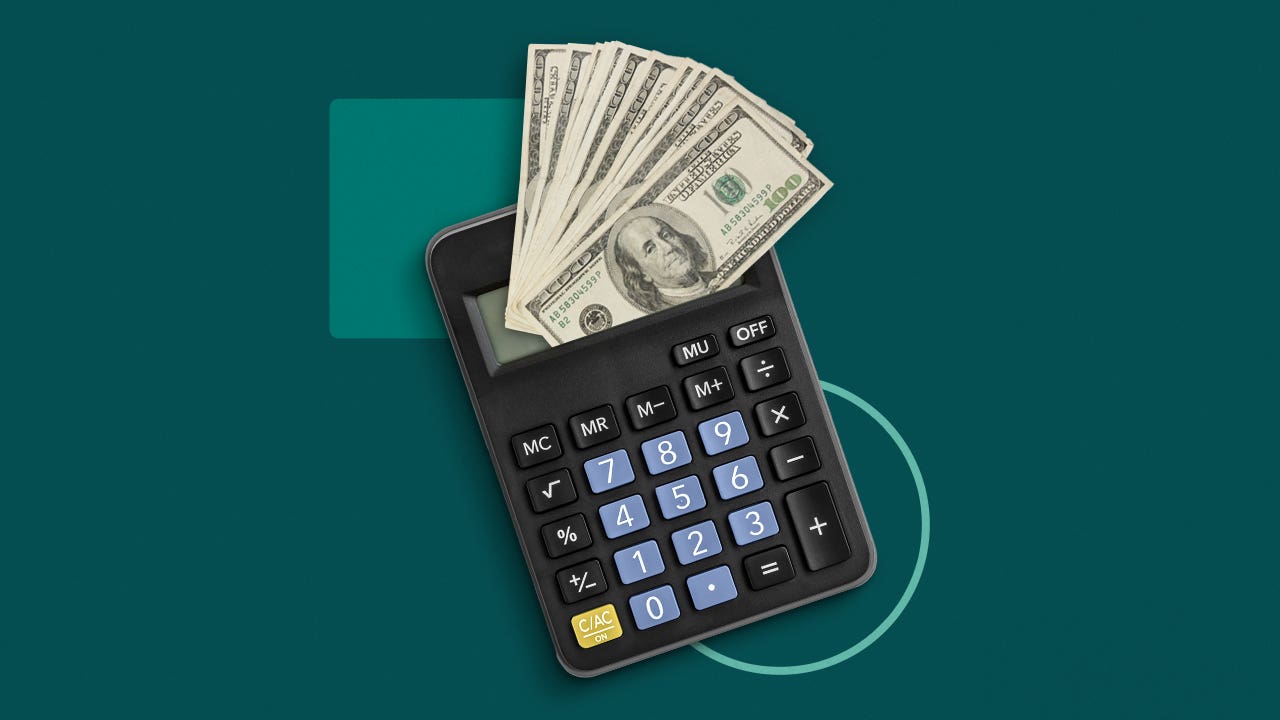How to calculate interest on a loan




Key takeaways
- Lenders calculate how much interest you’ll pay with each payment in two main ways: simple or on an amortization schedule.
- Short-term loans often have simple interest.
- Larger loans, like mortgages, personal loans and most auto loans, have an amortization schedule.
- The difference between the two is in how interest is applied to the principal amount.
Lenders charge interest in two main ways — simple or on an amortization schedule. The way you calculate total interest charges will differ between the two accrual types. While you can use a calculator, understanding the mechanics makes you a better-informed borrower.
In an amortizing loan, the part of your payment that goes toward interest decreases over time and the part that goes toward the principal balance increases. With a simple interest loan, the interest you pay for each payment remains the same for the loan’s lifetime.
How to calculate simple interest on a loan
If a lender uses the simple interest method, it’s easy to calculate loan interest. You will need your principal loan amount, interest rate and loan term to calculate the overall interest costs.
The monthly payment is fixed, but the interest you’ll pay each month is based on the outstanding principal balance. If you pay off the loan early, you could save a sizable amount in interest, assuming the lender doesn’t charge a prepayment penalty.
Formula for calculating simple interest
You can calculate your total interest by using this formula:
- Principal loan amount x Interest rate x Loan term in years = Interest
For example, if you take out a five-year loan for $20,000 and the interest rate on the loan is 5 percent, the simple interest formula would be $20,000 x .05 x 5 = $5,000 in interest.
Who benefits from simple interest
Borrowers who make on-time or early payments benefit from simple interest. Because interest is calculated based only on the loan principal, borrowers can save more with these loans than with those with compound interest.
Types of loans that use simple interest
While simple interest is less common, you might encounter this form of interest on short-term loans, such as payday loans and car title loans.
Those with student loans may also pay simple interest. For instance, all federal student loans charge simple interest.
How to calculate amortizing interest on a loan
Many lenders charge interest based on an amortization schedule. This includes mortgages, personal loans and most auto loans. The monthly payment on these loans is fixed — the loan is paid over time in equal installments. However, how the lender charges interest changes over time.
The main difference between amortizing loans and simple interest loans is the initial payments for amortizing loans are generally interest-heavy. That means a smaller portion of your monthly payment goes toward your principal.
As time passes, and you draw closer to your loan payoff date, the table turns. Toward the end of your loan, the lender applies most of your monthly payments to your principal balance and less toward interest fees.
Formula for calculating amortized interest
Here’s how to calculate the interest on an amortized loan:
- Divide your interest rate by the number of payments you’ll make that year. If you have a 6 percent interest rate and you make monthly payments, you would divide 0.06 by 12 to get 0.005.
- Multiply that number by your remaining loan balance to find out how much you’ll pay in interest that month. If you have a $5,000 loan balance, your first month of interest would be $25.
- Subtract that interest from your fixed monthly payment to see how much in principal you will pay in the first month. If your lender has told you that your fixed monthly payment is $430.33, you will pay $405.33 toward the principal for the first month. That amount gets subtracted from your outstanding balance.
Repeat the process with your new remaining loan balance for the following month, and continue repeating for each subsequent month. To get the total interest, add all the interest payments together.
Here’s the amortization schedule for a $5,000, one-year personal loan with a 12.38 percent interest rate, the average interest rate on personal loans in early August 2024.
| Payment Date | Payment | Principal | Interest | Total Interest | Balance |
|---|---|---|---|---|---|
| Sept. 2024 | $445.13 | $393.55 | $51.58 | $51.58 | $4,606.45 |
| Oct. 2024 | $445.13 | $397.61 | $47.52 | $99.11 | $4,208.84 |
| Nov. 2024 | $445.13 | $401.71 | $43.42 | $142.53 | $3,807.13 |
| Dec. 2024 | $445.13 | $405.86 | $39.28 | $181.80 | $3,401.27 |
| Jan. 2025 | $445.13 | $410.04 | $35.09 | $216.89 | $2,991.23 |
| Feb. 2025 | $445.13 | $414.27 | $30.86 | $247.75 | $2,576.95 |
| March 2025 | $445.13 | $418.55 | $26.59 | $274.34 | $2,158.41 |
| April 2025 | $445.13 | $422.87 | $22.27 | $296.61 | $1,308.31 |
| May 2025 | $445.13 | $427.23 | $17.90 | $314.51 | $1,307.56 |
| June 2025 | $445.13 | $431.64 | $13.50 | $328.01 | $876.68 |
| July 2025 | $445.13 | $436.09 | $9.04 | $337.05 | $440.59 |
| Aug. 2025 | $445.13 | $440.59 | $4.55 | $341.60 | $0.00 |
Who benefits from amortized interest
Lenders benefit from amortized interest. Because these loans tend to have longer terms, your total interest paid is higher. And you save less if you pay off the loan early, since your interest payments are frontloaded.
Types of loans that use amortized interest
Many types of installment loans use amortized interest, including auto loans, mortgages and debt consolidation loans. You may also encounter amortized interest on home equity loans.
Factors that can affect how much interest you pay
Several factors can affect how much interest you pay for financing. Some primary variables that can impact how much you will pay over the loan life include:
- Loan amount. The amount of money you borrow — your principal — greatly influences how much interest you pay to a lender. The more money you borrow, the more interest you’ll pay. This is because a larger amount means more of a risk for the lender.
- Your credit score. Your credit score is key in determining your loan’s interest rate. Less-than-perfect credit typically means you will get a higher interest rate, as lenders consider you a bigger risk than someone with excellent credit.
- Loan term. Shorter loan terms generally require higher monthly payments, but you’ll incur less interest because you minimize the repayment timeline. Longer loan terms may reduce the amount you need to pay each month, but you’ll pay more interest because you’re stretching the repayment out.
- Repayment schedule. When you make payments more often, it can reduce the principal owed on your loan amount faster. In many cases, such as when a lender charges compounding interest, making extra payments could save you a lot. However, make sure the payments go to paying down the principal.
- Payment amount. In the same way that making loan payments more frequently can save you money on interest, paying more than the monthly minimum can also result in savings. In many cases, you can request the payment specifically be applied to the principal amount.
How to get the best loan interest rates
You may be able to improve your chances of obtaining the most favorable interest rate on a loan in a few ways:
- Improve your credit score. The most competitive interest rates are generally available to those with good to excellent credit.
- Opt for a shorter repayment timeline. The best interest rates will always accompany the shortest-term loans. You will pay less interest over time if you can afford the payments.
- Reduce your debt-to-income ratio. Your debt-to-income (DTI) ratio is the monthly debt you pay as a percentage of your gross monthly income. It is nearly as significant as your credit score when qualifying for a competitive loan.
- Compare offers. Loans aren’t a one-size-fits-all type of product — each lender has its own offering. Prequalify with at least three different lenders to ensure you get the best rates. Prequalifying allows you to see the terms and interest rates available to you with a specific lender without hurting your credit.
Bottom line
Before taking out a loan, it’s vital to calculate how much you’ll pay in interest to understand the true borrowing costs. Ask the lender if interest is assessed using the simple interest formula or an amortization schedule. Then, use the appropriate formula or an online calculator to run the numbers.
Also, be mindful of the factors that will affect the interest you pay. It may be worthwhile to borrow less or shorten the repayment term to keep more of your hard-earned money in your pocket.




